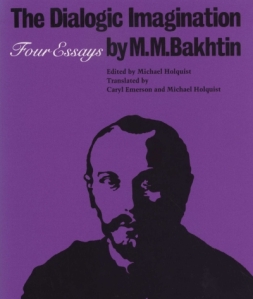How do students complete their writing today, and how will they complete it in the future? That twofold question is at the heart of two major points of inquiry within the field of composition studies.

“Pencils down!” Let’s see how you wrote and what you learned about writing. That’s process and transfer in a nutshell. Credit:
Ohmann Allanne
Theories around process, or the procedures and practices by which writers compose (or are asked to compose) their works, aim to answer the first half of that question. Subsequently, theories around the idea of transfer, or the “knowledge and skills that can transfer to writing tasks in other courses and contexts” (Wardle 65) usually after completing an introductory writing course, respond to the second half of that question. Herein, I will explore some of the theories and pedagogies around process and transfer within writing and discuss personal application and challenges surrounding these two important issues of inquiry.
Pritchard and Honeycutt argue that one can find elements of the writing process in early Greek and Roman models of teaching rhetoric (276). Perhaps here we might consider, as Winterowd and Blum mention, Plato’s process of dialectic (3) or Isocrates’ paideia (15), or we might even look at Bloodgood’s ascription of Quintilian’s theories of “Imitation, Authenticity, Modeling, and Practice” (32) to support the writing process. Still, however, while ancient foundations may exist, process in writing did not appear in the literature until 1947 in Day’s seven steps to writing (Pritchard and Honeycutt 276), and it is followed by only a small interest in theories around process in the 1950s and 1960s; however, the ground-breaking work on teaching process as instruction in the classroom came in the 1970s with “the seminal contributions of Peter Elbow, Janet Emig, Donald Graves, Donald Murray, and Mia Shaughnessy” (Pritchard and Honeycutt 277).
Moving forward in the look at process within the history of composition studies, Fulkerson addresses the significance of process both from a historical and twenty-first-century angle. Examining the differences and similarities in composition studies between 1980 and 2001, Fulkerson speaks to how, although more than twenty years apart, writing process tops the list in two important bibliographic works: Donovan and McClelland’s 1980 text, Eight Approaches to Teaching Composition, and Tate, Rupiper, and Schick’s 2001 text, A Guide to Composition Pedagogies (see a comparison chart and read more details at PAB #2.1 Composition at the Turn of the Twenty-First Century). Additionally, Fulkerson examines the axiologies of Critical/Cultural Studies, Contemporary Expressivist Composition, and Procedural Rhetoric and the implementation of process through the framework of those perspectives. As such, Fulkerson seems to conclude, with Berlin, in his short detour and criticism of post-process theory, that everyone teaches process in writing, just no one teaches it in the same way (669). Such amorphousness aside, Fulkerson does provide, throughout his discussion on the three main perspectives he sees as dominant in composition studies, the ways each practitioner appears to implement process in the classroom. See the chart, below, for a break out of those implementations.

Fulkerson breaks out how process is implemented through the three perspectives he sees in composition studies.
Besides the type of axiom that everyone teaches process but no one fully agrees on how to teach it, another almost universal notion about research regarding process in composition studies, at least since the cognitivist work of folks like Flower and Hayes in the 1980s, is that writing is non-linear and recursive. The prewrite-write-rewrite model has not held up; rather, researchers often regard the recursive process as “mainly a series of problem-solving tasks” (Pritchett and Honeycutt 277).
As one might expect, writing instruction around process is difficult to study and pin down because practitioners implement the teaching of process in such a wide variety of ways. That said, I am intrigued by the theory of process, and if interested, readers can view my thoughts on how process has a sort of kairic nature—a working with the time, place, situation, or audience—to it in my analysis from Paper #1.
Another idea I would like to touch on, however, from a pedagogical standpoint regarding process is how to know when an instructor has clung too much to process. For instance, although I teach and often design courses around a model of exploring, prewriting, drafting, editing/revising—given students four weeks usually to write an essay—I have noted a number of students who grow weary by the process, especially as deliverables are due with each step. Based on that experience, questions certainly arise in my mind. For example, does such length of process from start to finish actually better the end product, or is the process in place just a matter of making students do something that I know if left to their own devices they will not do? If the former is true, I should certainly search for greater reassurances, but as mentioned, process is difficult to study and pin down. If the latter is true, I cannot help but to think about hegemony in the classroom.

What type of “becoming” happens if process is disciplined into students? Credit: Sid Mosdell
Thinking about the latter, I have to admit that I find some cognitive dissonance surrounding the notion of process, as it is attached to the philosophical ideal of “becoming “(Seibt), often equated with the beauty of transformation, such as that which happens with a butterfly or flower. With that in mind, is it not ironic that disciplining–to use the Foucauldian term–students into the mode of process would somehow subvert the beauty of becoming? I certainly could expand further with this philosophical riddling, but I will suffice it to say that these questions and junctures that loom around process are what makes it such a major point of inquiry within composition studies.
Speaking of major points in the field, transfer, or the carryover of knowledge or skill–in this case, writing–from one situation to the next, is another large subject of inquiry in composition studies. In fact, Smit calls transfer “the heart of the matter in
learning to write” (119). That said, it is also tricky to measure transfer because of the vast and varied ways that transfer would happen (or not) from those who were initially concerned about its persistence. For instance, the first-year composition instructor, who wants to know if her work with students on comparison and contrast pays off, would find it hard to follow and assess her students level of transfer on such a skill because they disperse to so many different courses after hers. Certainly, measurement can be done, but, as Smit points out, it has not been done much–at least as the literature bears out–except in professional writing; however, in his chapter, Smit does relay a study by Walvoord and McCarthy on transfer of writing that reviews the work of students across four disciplines of study. While the study found “students transferring knowledge from one class to another and that in their writing for a particular class students often relied on examples of thinking and writing that they had learned elsewhere” (Smit 128-9), it also points out a large number of examples where difficulties with transfer take place. You can read more about this study in PAB #2.2 Transfer from The End of Composition Studies.
To reflect on transfer and Smit’s glass-is-half-empty approach to its study, I started to think about the process of moving knowledge and skills, and arrived at the question: What if intervention strategies were involved to aid the transfer? Since among my professional responsibilities I direct one, I thought about writing centers and their place in transfer.

Like Bo-Peep, some think transfer comes back with no help. Credit: Carlos
Can a tutor aid the memory of a student from what s/he learned in, say, an introductory course? And taking the individual out of it, what about digital learning objects? Could they possibly help create a return to the mind of a buried memory? I performed some research on this area of intervention, especially the digital portion, and I have not found much study on writing transfer in that area, but I did find a solid quote from a digital handout, of all places, stemming from a workshop at East Carolina University, which appears to be about writing across the curriculum and related transfer. In the handout, my idea about intervention and transfer is represented at the very end called “The Bo-Peep Theory of Transfer”; that is, like Bo-Peep expected of her sheep, some expect transfer just to come back with no help at all. Borrowed from Perkins and Salomon (1988), the quote states, and I will leave my kind readers with this, as I now have some supporting foundation for my next post about an object of study: “Educators . . . treat transfer as if it will take care of itself. But, it does not” (“Transfer of Writing Skills”).
Works Cited
Bloodgood, Janet W. “Quintilian: a Classical Educator Speaks to the Writing Process. “Reading Research and Instruction. 42.1 (2002): 30-43. Web. 30 Sept. 2015.
Fulkerson, Richard. “Composition at the Turn of the Twenty-First Century.” College Composition and Communication 56.4 (2005): 654-87. Web. 22 Sept. 2015.
Pritchard, Ruie, J., and Honeycutt, Ronald L. “The Process Approach to Writing Instruction: Examining Its Effectiveness.” Handbook of Writing Research. Ed. MacArthur, Charles A, Steve Graham, and Jill Fitzgerald. New York: Guilford Press, 2006. 276-290. Web. 26 Sept. 2015
Seibt, Johanna. “Process Philosophy.” The Stanford Encyclopedia of Philosophy. Ed. Edward N. Zalta. 2013. N. pag. U of Stanford. Web. 1 Oct. 2015.
Smit, David W. “Transfer.” The End Of Composition Studies. Carbondale: Southern Illinois University Press, 2007. 119- 134. eBook Collection (EBSCOhost). Web. 24 Sept. 2015.
“Transfer of Writing Skills.” Writing Across the Curriculum. East Carolina University, 2014. Web. 26 Sept. 2015.
Wardle, Elizabeth. “Understanding ‘Transfer’ from FYC: Preliminary Results of a Longitudinal Study.” Journal of the Council of Writing Program Administrators 31.1/2 (2007): 65-85. Web. 1 Oct. 2015.
Winterowd, W R, and Jack Blum. A Teacher’s Introduction to Composition in the Rhetorical Tradition. Urbana, Ill: National Council of Teachers of English, 1994. Web. 30 Sept. 2015.








